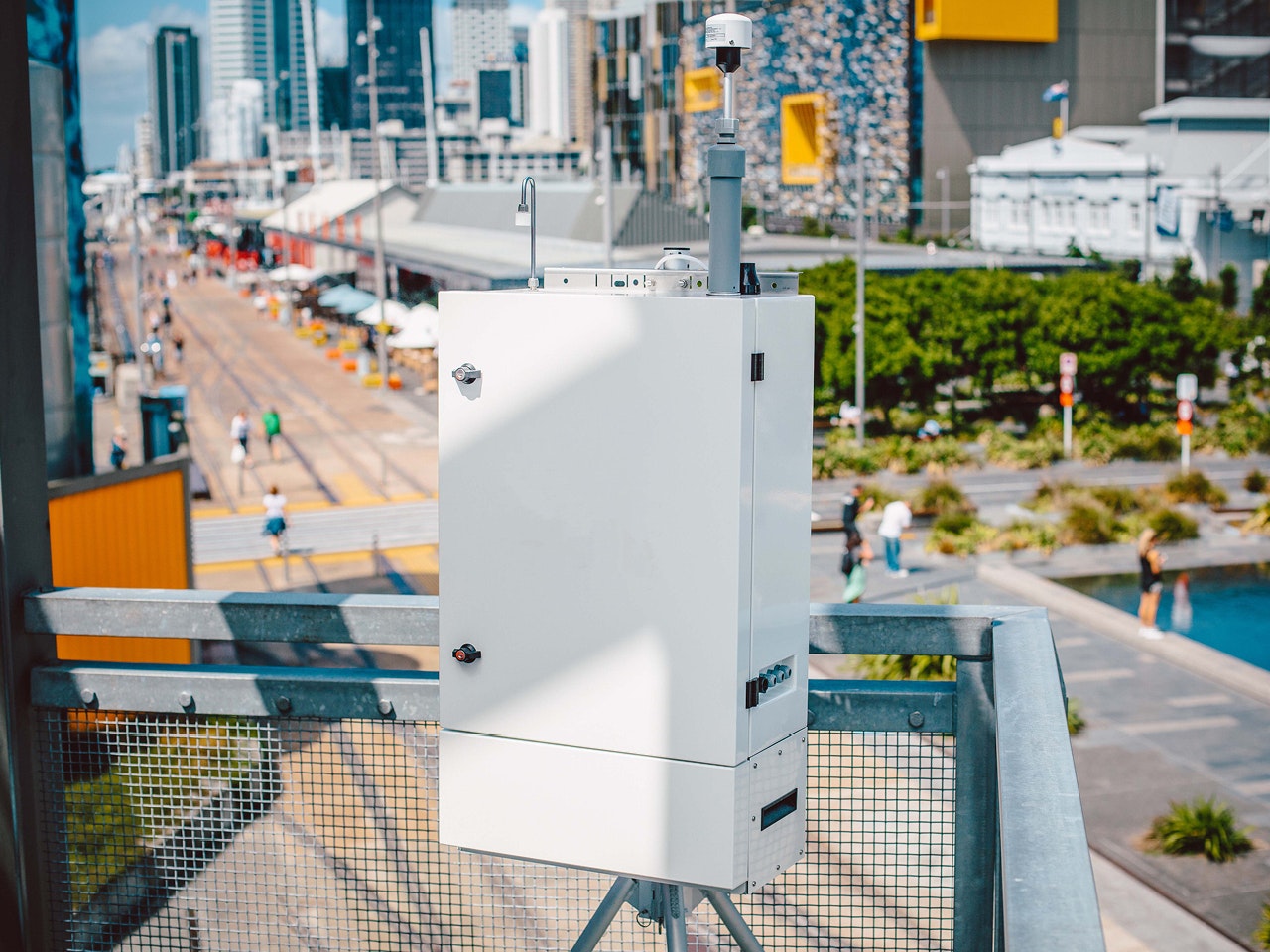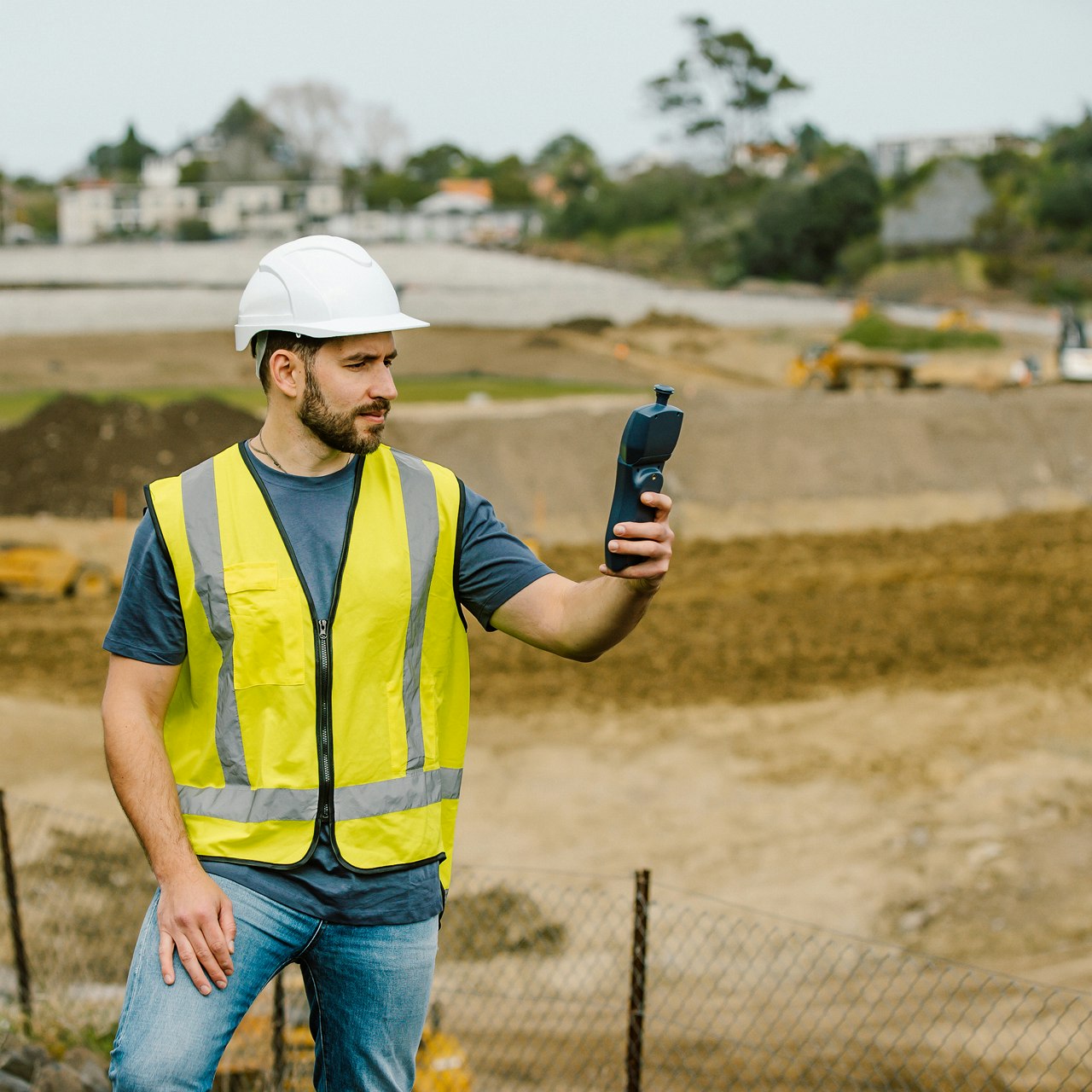Measurements
Particulate Matter
Aeroqual designs and delivers monitors that measure particulate matter (PM). Choose from our perimeter or handheld air monitoring range.
Here we cover particulate matter measurement principles, specifications and performance.
Overview of PM
Particulate matter (PM) is one of the six criteria air pollutants identified by the US EPA. Two sizes of particulate matter are considered important by the WHO, PM10 and PM2.5. Both PM10 and PM2.5 are monitored extensively around the world by regulatory agencies. PM comes from both human and natural sources. Man-made sources include fuel burning, construction, industrial emissions, vehicle exhausts and mechanical crushing of larger particles.
Aeroqual offers two different technologies for monitoring PM: particle counting and nephelometry.
PCX Module (particle counter)
The PCX module features in our perimeter air quality monitors: AQS 1 Air Quality Monitor and Dust Sentry.
PCX module measurement principle
The PCX PM module comprises an optical particle counter that uses scattered light to size and count particles. The amount of scattered light is converted to a voltage pulse and the amplitude of that voltage pulse is calibrated to a particle diameter. The particles are assigned based on diameter to one of six particle count channels. Using a proprietary algorithm, particle counts for each size fraction are converted into mass measurements, providing continuous and simultaneous measurement of PM1, PM2.5, PM4, PM10 and TSP.
The PCX module also includes a controlled heated inlet, and active flow control.
Module specifications and performance
The PCX module performance specifications are given in the table below.
Module
PM1
PM2.5
PM4
PM10
TSP
Range (mg/m3)
0-30
0-30
0-30
0-30
0-30
Resolution (μg/m3)
0.1
0.1
0.1
0.1
0.1
Lower detectable limit (μg/m3)
0.1
0.1
0.2
0.3
0.5
Precision
4.3%
3.1%
2.8%
2.3%
2.7%
Accuracy
<5%
<5%
<5%
<5%
<5%
Noise: Zero (μg/m3); Span (% of reading)
<0.1; 0.8%
<0.1; 1.2%
0.1; 1.1%
0.1; 1.2%
0.2; 1.7%
24hr Drift: Zero (μg/m3); Span (% of FS)
-0.2; 5.7%
-0.1; 3.4%
<0.1; 5.0%
0.3; 0.7%
0.6; 1.5%
PCX field results
An Aeroqual Dust Sentry containing a PCX was co-located from May until July 2023 at an air quality regulatory station in Christchurch, New Zealand, and its data compared with the reference data. This co-location study was completed as a requirement for MCERTs certification, which this unit has achieved. The PM2.5 data from the PCX module produced an R2 of 0.93 and a mean absolute error (MAE) of 0.33 μg m-3. The PM10 data from the PCX module produced an R2 of 0.91 and a mean absolute error (MAE) of 0.66 μg m-3.
PCX module time series plot PM2.5
PCX module scatter plot of data with linear regression and coefficient of determination PM2.5
PCX module time series plot PM10
PCX module scatter plot of data with linear regression and coefficient of determination PM10
Demonstration of equivalence
The total measurement uncertainty, based on the EU Guide to Demonstration of Equivalence, using an hourly limit value of 50 μg m-3, was calculated as 6.2% for PM2.5 and 8.6% for PM10. Note that an expanded relative uncertainty of less than 25% is required for a PM monitor to be considered regulatory grade. The PCX module meets this requirement.
Directive 2008/50/EC downloaded 10/02/2023 here.
Module calibration and traceability
The PCX module features an automatic internal zero calibration. The module uses an internal zero filter and pump to perform a zero calibration. The zero calibration can be triggered on start-up, placed on a continuous schedule, or manually triggered on the Aeroqual Cloud platform. Correct maintenance ensures the auto-zero function operates correctly and prevents negative readings. The automatic zero calibration can be verified in the field by using an external filter placed upon the inlet.
The PCX module can be returned to Aeroqual for factory span calibration. This is recommended every 2 years.
The module can be field calibrated by co-locating it alongside another PM instrument of equal or better performance.
Aeroqual can also offer its patented remote calibration procedure, MOMA, for this module, which avoids the need for a site visit while also maintaining traceability to nearby regulatory air monitoring stations. See your Aeroqual representative for more information on this software tool.
Impact of humidity and water vapor
High humidity can lead to inaccurate measurement from an optical particle sensor if not mitigated. This is because high humidity (including fog) causes aerosol particle growth through adsorption of water vapor, which can lead to erroneously high measurements by the particle sensor. However, the PCX module contains an inlet heater which reduces the sample air humidity and prevents the particle growth. This maintains the accuracy of the PM measurement even when the water content in the air is very high.
PCX module expected lifetime
The PCX module contains two pumps, both expected to last between 18 months and 2 years of continuous operation. The module particle filter needs to be replaced every 6-12 months. The module also contains a laser and a photodetector, requiring factory calibration every 2 years.
Nephelometer Module (specific PM fraction size)
The PM nephelometer module features in our perimeter air quality monitors: AQS 1 Air Quality Monitor, Dust Sentry, and AQM 65 Monitoring Station.
PM Nephelometer module measurement principle
The PM nephelometer module combines a laser nephelometer with a high-precision sharp cut cyclone to give accurate real-time measurement of ambient particulate matter. By changing the sharp cut cyclone, the particle sensor can be used to measure PM1, PM2.5, PM10 or TSP. The sharp cut cyclone physically selects particles of a target size, ensuring precise measurement of only the size fraction of interest.
Following particle size selection, the sample stream is sent to the nephelometer module. A nephelometer is an optical sensor that uses light scattering to measure particle mass. The light source is a visible laser diode and scattered light is measured in the near forward angle using focusing optics and a photo diode.
The nephelometer has an on-board temperature sensor that corrects for thermal drift, a sheath air filter to keep the optics clean, automatic baseline drift correction, and a fiber optic span system to provide a check of the optical components.
PM Nephelometer module specifications and performance
PM Nephelometer Module
Sizes
PM1, PM2.5, PM10 OR TSP
Range (μg/m3)
0 - 60,000
Resolution (μg/m3)
0.1
Lower detectable limit (μg/m3)
<1
Accuracy
±(2 μg/m3 + 5% of reading)
PM nephelometer field test results PM2.5
An Aeroqual AQM 65 containing an PM2.5 nephelometer module was co-located from December 2016 to March 2017 at an air quality regulatory station in Hartford, Connecticut, and its data compared with reference data downloaded from the USEPA AirNow website. The PM2.5 nephelometer data produced an R2 of 0.79 (24-hour average). The total measurement uncertainty, based on the EU Guide to Demonstration of Equivalence, using an hourly limit value of 50 μg m-3 was calculated as 12.9%. Note that an expanded relative uncertainty of less than 25% is required for a PM2.5 monitor to be considered regulatory grade. The PM2.5 module meets this requirement.
Nephelometer time series plot PM2.5
Nephelometer scatter plot of data with linear regression and coefficient of determination PM2.5
PM nephelometer field test results PM10
An Aeroqual Dust Sentry containing an PM10 nephelometer module was co-located with two BAM reference instruments from July to September 2012 in Nelson, New Zealand. This co-location study was completed as a requirement for MCERTs certification, which this unit has achieved. The PM10 nephelometer data produced an R2 of 0.79 (24-hour average).
Time series plot PM10
Scatter plot of data with linear regression and coefficient of determination PM10
Demonstration of equivalence
The total measurement uncertainty, based on the EU Guide to Demonstration of Equivalence, using an hourly limit value of 50 μg m-3, was calculated as 15.3%. Note that an expanded relative uncertainty of less than 25% is required for a PM10 monitor to be considered regulatory grade. The PM10 module meets this requirement.
Directive 2008/50/EC downloaded 10/02/2023 here.
PM nephelometer module calibration and traceability
The PM nephelometer module features an automatic internal zero calibration. The module uses an internal zero filter and pump to perform zero calibration every 12 hours. Correct maintenance ensures the auto zero function operates correctly and prevents negative readings. The automatic zero calibration can be verified in the field by using an external filter placed upon the inlet.
The nephelometer optical engine can be returned to Aeroqual for factory span calibration, this is recommended every 2 years.
The module can be field calibrated by co-locating it alongside another PM instrument of equal or better performance.
Aeroqual can also offer its remote calibration procedure, MOMA, for this module, which avoids the need for a site visit while also maintaining traceability to nearby regulatory air monitoring stations. See your Aeroqual representative for more information on this software tool.
Impact of humidity and water vapor
High humidity can lead to inaccurate measurement from an optical particle sensor if not mitigated. This is because high humidity (including fog) causes aerosol particle growth through adsorption of water vapor which can lead to erroneously high measurements by the particle sensor.
However, the nephelometer module contains an inlet heater which reduces the sample air humidity and prevents the particle growth. This maintains the accuracy of the PM measurement even when the water content in the air is very high.
PM nephelometer module expected lifetime
The Aeroqual manufactured electronics module responsible for data analysis does not contain any consumable parts and does not contain any components which might wear out or expire and should last between 3 to 5 years.
The Aeroqual manufactured pump module contains two pumps, both expected to last between 18 months and 2 years of continuous operation.
The MetOne manufactured nephelometer module contains filters which are changed as required, usually between 1 and 3 months. The module also contains a laser and photodetector, requiring factory calibration every 2 years.
Handheld air monitors and fixed indoor monitors
The PMX sensor head features in our handheld air quality monitor, Aeroqual Ranger.
- PMX Particulate Matter Sensor (PM1, PM2.5, PMresp, PM10, and TSP)
PMX Sensor head measurement principle
The PMX sensor head comprises an optical particle counter that uses scattered light to size and count particles. The amount of scattered light is converted to a voltage pulse and the amplitude of that voltage pulse is converted to a particle diameter. The particles are assigned based on diameter to one of six particle count channels. Using a proprietary algorithm, particle counts for each size fraction are converted into mass measurements for PM1, PM2.5, PMresp, PM10, and TSP.
PMX Sensor head specifications
The table below contains the PMX sensor head specifications. It can be used on our Ranger products.
Sensor Code
PMX
Sensor Type
LPC
Range (mg/m3)
0-30
Zero Stability (µg/m3)
±0.1
Accuracy of Factory Calibration
<±8% of reading
Display Resolution (µg/m3)
0.1
Response Time (seconds)
1
PMX sensor performance
In 2023 we compared the performance of the Ranger | Dust against the EN16450 certified Palas Fidas 200 using ISO 12103 A1 ultrafine test dust. The Ranger | Dust exhibited very similar performance to the certified Palas Fidas 200 reference instrument with ISO12103 A1 Arizona Road Dust . Its linearity was excellent with R2 values greater than 0.99. Measurement error was very low - less than 5% - for all size fractions PM1 to TSP. Read the full report here.
Products that measure particulate matter
The following products measure particulate matter, as well as gaseous pollutants in real-time.
Articles
Inquire about our particulate matter products
Our particulate matter advanced monitoring systems deliver hyper-local data and real-time alerts, giving you actionable data to make the decisions that matter.












